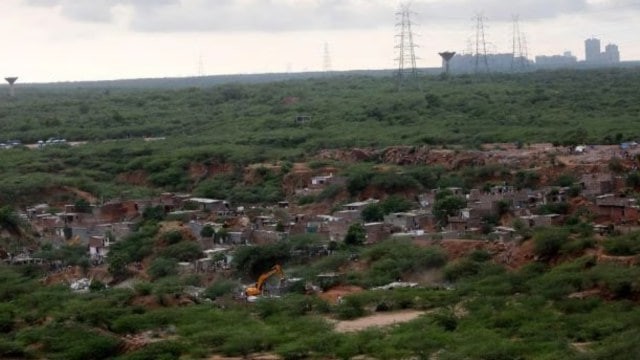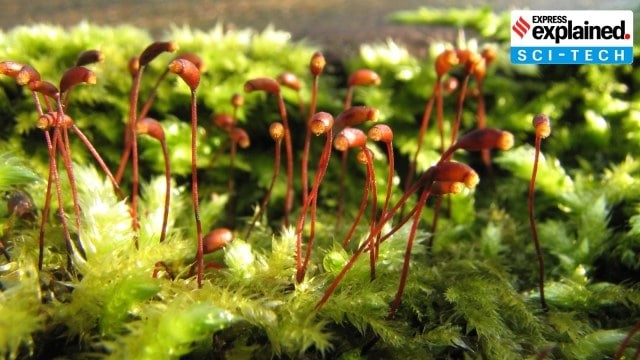Description
Source: DTE
Disclaimer: Copyright infringement not intended.
Context:
- A new international fund has been created to help protect biodiversity.
- On 25th February 2025 , Cali Fund was launched in Rome during the resumed session of COP 16 of the Convention on Biological Diversity (CBD).
- This new fund will receive contributions from the private sector companies that commercially use digital sequence information (DSI) obtained from genetic resources.
- It aims to raise funds for global biodiversity conservation.
Do you know ?
●Digital sequence information (DSI) refers to genetic sequence data that is stored or transmitted in digital formats, such as through files or databases.
●This data can represent DNA, RNA, or protein sequences that have been decoded or mapped from biological organisms.
●The information is commonly used in fields such as genomics, bioinformatics, & biotechnology.
|
Key Objectives of the Cali Fund:
1. Support for Biodiversity:
- The Fund will help to achieve the 3 main goals of the CBD
-
- Conservation of Biological Diversity
- Sustainable Use of Biodiversity
- Fair and Equitable Sharing of Benefits.
2. Private Sector Contributions:
- For the 1st time, Companies that benefit from DSI, such as those in the pharmaceuticals, cosmetics, agriculture & biotechnology sectors will deposit a portion of their revenues into this fund.
- The fund aims to create a new financial source to support biodiversity conservation.
3. Indigenous Peoples and Local Communities:
- 50% of the Cali Fund will be allocated to the needs of indigenous peoples and local communities.
- This is to recognize their role in biodiversity conservation with a focus on supporting women & youth..
4. Implementation of the Kunming Montreal Global Biodiversity Framework (KMGBF):
- The Fund will help to implement the KMGBF.
- It is the global plan to stop and reverse biodiversity loss.
- It will support the delivery of National Biodiversity Strategies and Action Plans (NBSAPs) in developing countries & it will enhance research on biodiversity.
Institutional Arrangements:
- UNDP and UNEP: The Cali Fund will be managed through a partnership between the United Nations Development Programme (UNDP) & the United Nations Environment Programme (UNEP).
- Multi-Partner Trust Fund Office (MPTFO): The Fund will be administered by the MPTFO which is responsible for managing pooled funds for development projects.
- CBD Secretariat: The CBD Secretariat will host the Cali Fund Secretariat.
Background on the Cali Fund:
- The Cali Fund was the part of the Multilateral Mechanism adopted at COP 15 in 2022.
- It focuses on ensuring the fair & equitable sharing of benefits from the use of genetic resources.
- The Fund is designed to support the Kunming-Montreal Global Biodiversity Framework (KMGBF) adopted in 2022.
- This Framework sets 23 targets for 2030 and 4 goals for 2050.
Convention on Biological Diversity (CBD) and Related Protocols
About CBD:
●Established: 1992
●Purpose: The CBD is an international treaty designed to conserve biodiversity, promote the sustainable use of its components.
●It ensure fair sharing of benefits arising from the use of genetic resources.
●Parties: The CBD has 196 Parties (countries).
●Key Focus Areas:
1.Conservation of Biodiversity
2.Sustainable Use of Biodiversity
3.Fair Sharing of Benefits.
The Nagoya Protocol (2014):
●Nagoya Protocol is designed to ensure the fair & equitable sharing of benefits from the use of genetic resources.
●Key Elements:
- It establishes a transparent framework for how genetic resources are shared between countries and users.
- It aims to ensure that those who provide genetic resources receive fair compensation for their use.
●Parties: it has 141 Parties.
Kunming-Montreal Global Biodiversity Framework (GBF):
●It was adopted At COP 15 in 2022, after 4 years of negotiations & consultations.
●Purpose: The GBF is a global plan for biodiversity, building on previous CBD strategies & supporting the achievement of the Sustainable Development Goals (SDGs).
●Goals:
- 4 long-term goals for 2050: A world living in harmony with nature.
- 23 targets for 2030: Specific targets aimed at stopping biodiversity loss & addressing biodiversity degradation.
- The GBF is an ambitious way for global biodiversity & it sets measurable targets to track progress.
|
Source: DTE
|
PRACTICE QUESTION
Q. Consider the following statements:
- The Cali Fund will receive contributions from companies in sectors like pharmaceuticals, cosmetics, and biotechnology that benefit from Digital Sequence Information (DSI).
- 50% of the Cali Fund will be allocated to support biodiversity conservation in developed countries.
- The Cali Fund is designed to support the implementation of the Kunming-Montreal Global Biodiversity Framework (KMGBF).
- The Cali Fund will be managed by a partnership between the United Nations Development Programme (UNDP) and the United Nations Environment Programme (UNEP).
Which of the following statements given above is NOT true about the Cali Fund?
(A) 1 only
(B) 2 only
(C) 3 and 4 only
(D) None of the above
Answer: (B)
Explanation:
●Statement 2 is incorrect because 50% of the Cali Fund will be allocated to the needs of indigenous peoples and local communities, not specifically for developed countries.
●The other statements are correct.
|











